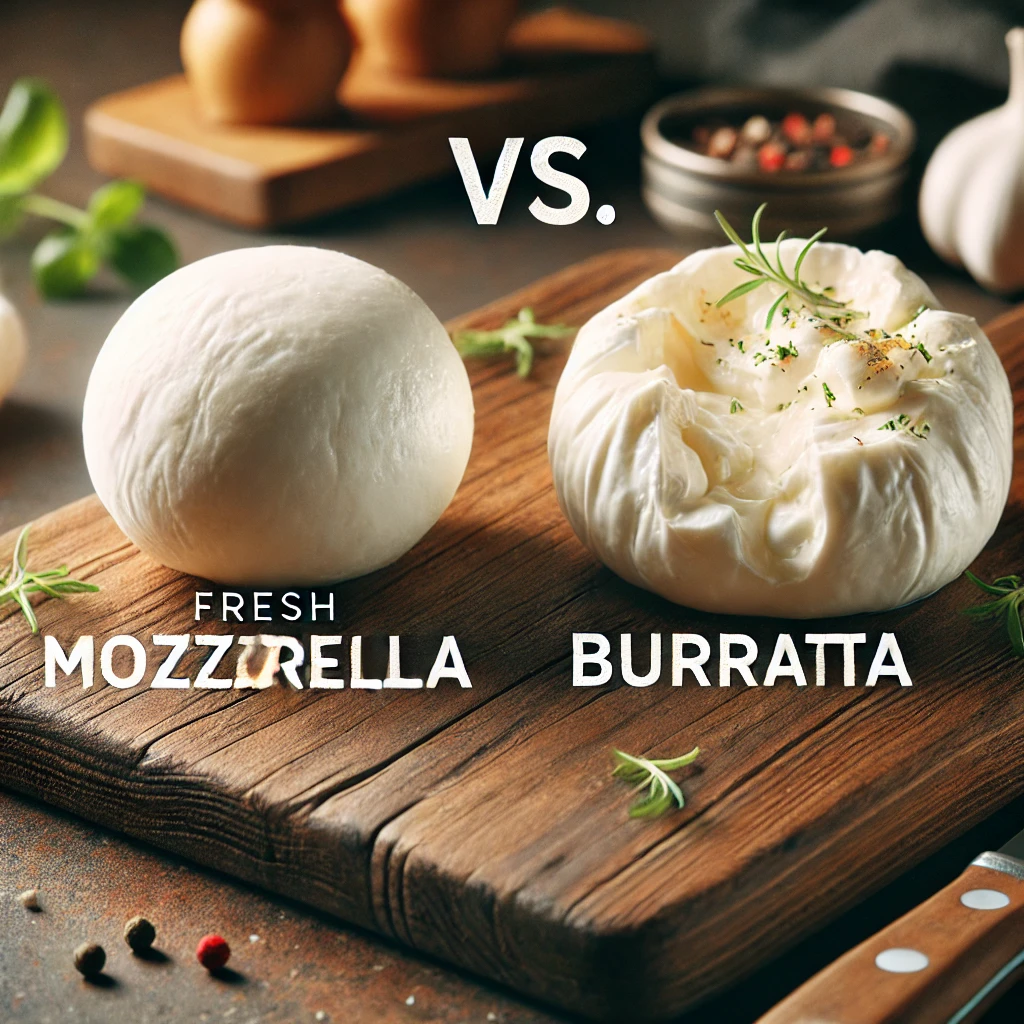




Fresh mozzarella and burrata are two popular types of semi-soft Italian cheeses. Both are creamy, white, and incredibly tasty. At first glance, they may look alike, but they are unique in their own ways.
Fresh mozzarella is a type of pulled curd, or pasta filata cheese, that originated in Southern Italy. It is commonly made from cow’s milk but can also be made from water buffalo’s milk (mozzarella di bufala), which is more expensive and harder to find.
Mozzarella has a fresh, semi-soft texture with a delicate, milky taste. Unlike other cheeses, it is not aged and is best eaten soon after being made. It is available in various shapes and sizes, from braided forms to large spheres or small ones called bocconcini. Smoked versions are also available.
Due to its high moisture content, fresh mozzarella is best served shortly after being made. However, it can be stored in brine and chilled for up to a week. If serving at room temperature, let the cheese sit on the counter for about 30 minutes before serving to bring out its best flavor and texture.
Fresh mozzarella pairs well with both sweet and savory dishes. It’s great with fruits like cantaloupe and tomatoes, as well as in pizza, pasta, and sandwiches. Here are some recipe ideas to try:
Burrata, meaning “buttery” in Italian, comes from the Puglia region of Italy. While it resembles fresh mozzarella from the outside, burrata’s uniqueness lies within. The outer shell is mozzarella, but the inside is filled with a mixture of cream and cheese curds, giving it a rich, milky flavor.
Burrata is best served at room temperature and should ideally be consumed within 48 hours of purchase. After that, its texture and flavor may decline, though it remains edible.
When burrata is sliced open, its creamy interior makes it a perfect topping for pasta, pizza, or served with crusty bread. Here are a few recipe ideas:
While both mozzarella and burrata are fresh cheeses, the choice between them depends on how you plan to use the cheese. For cooked dishes like pizza, mozzarella is preferable because it is less expensive and melts better, retaining its texture. Burrata, on the other hand, is best used in dishes where its creamy interior can shine, like on a cheese board or served with bread.
(burrata cheese,burrata cheese)